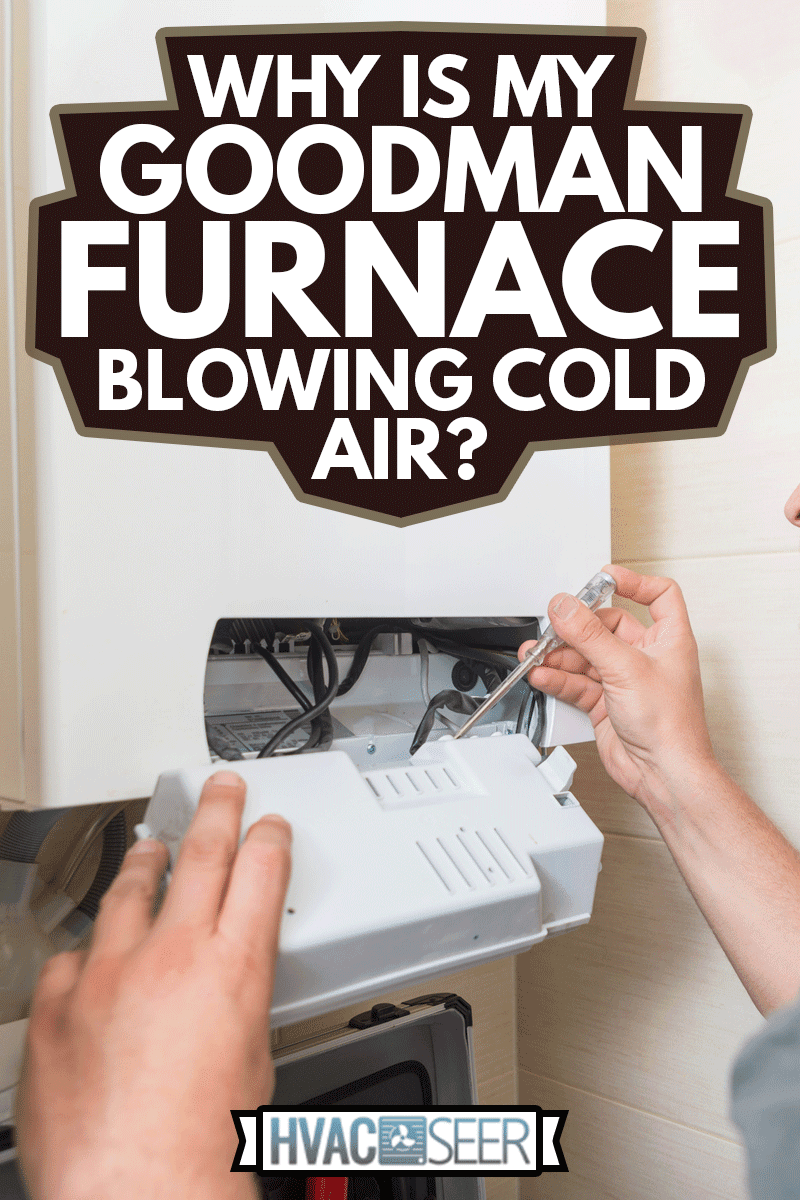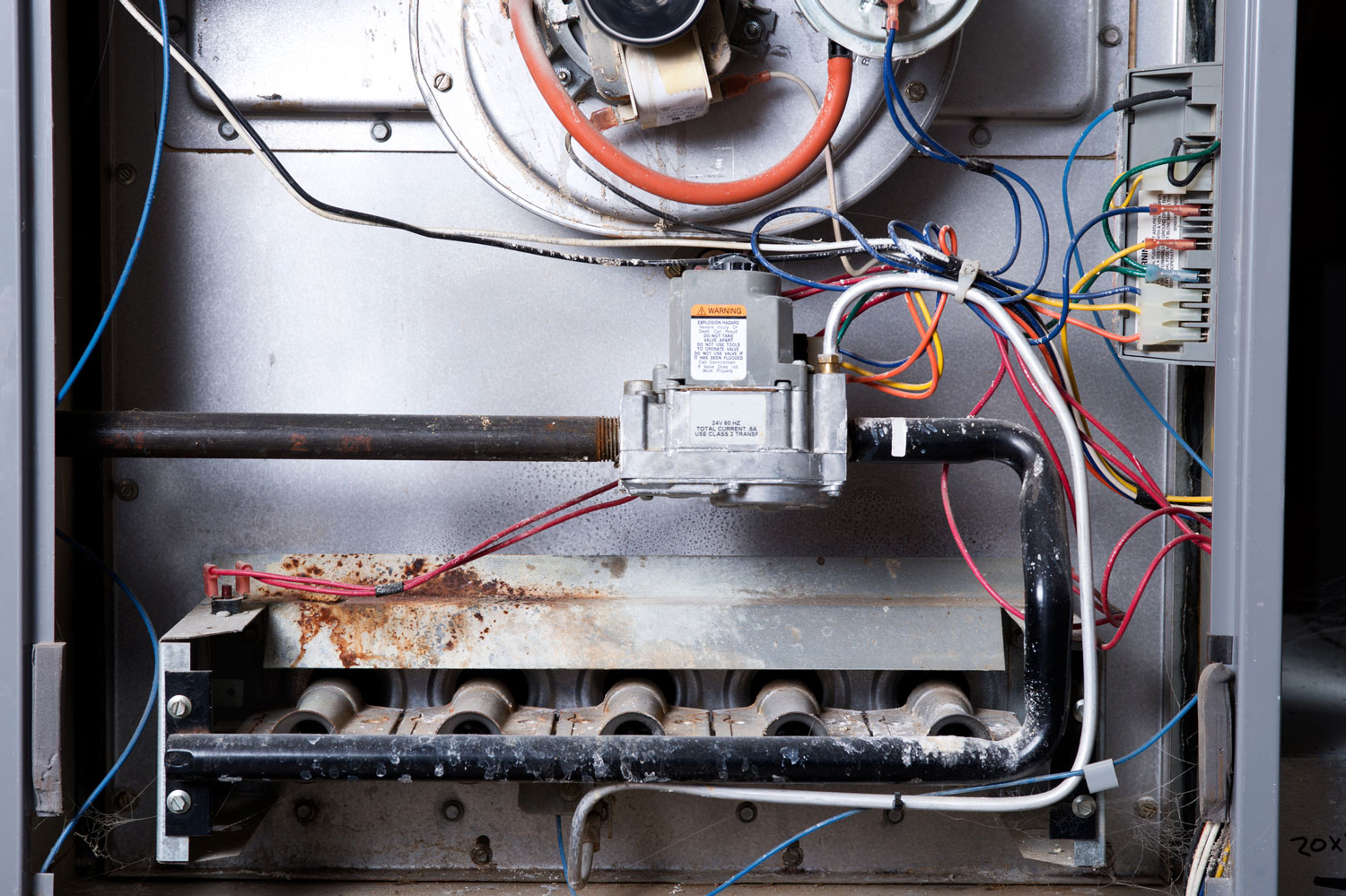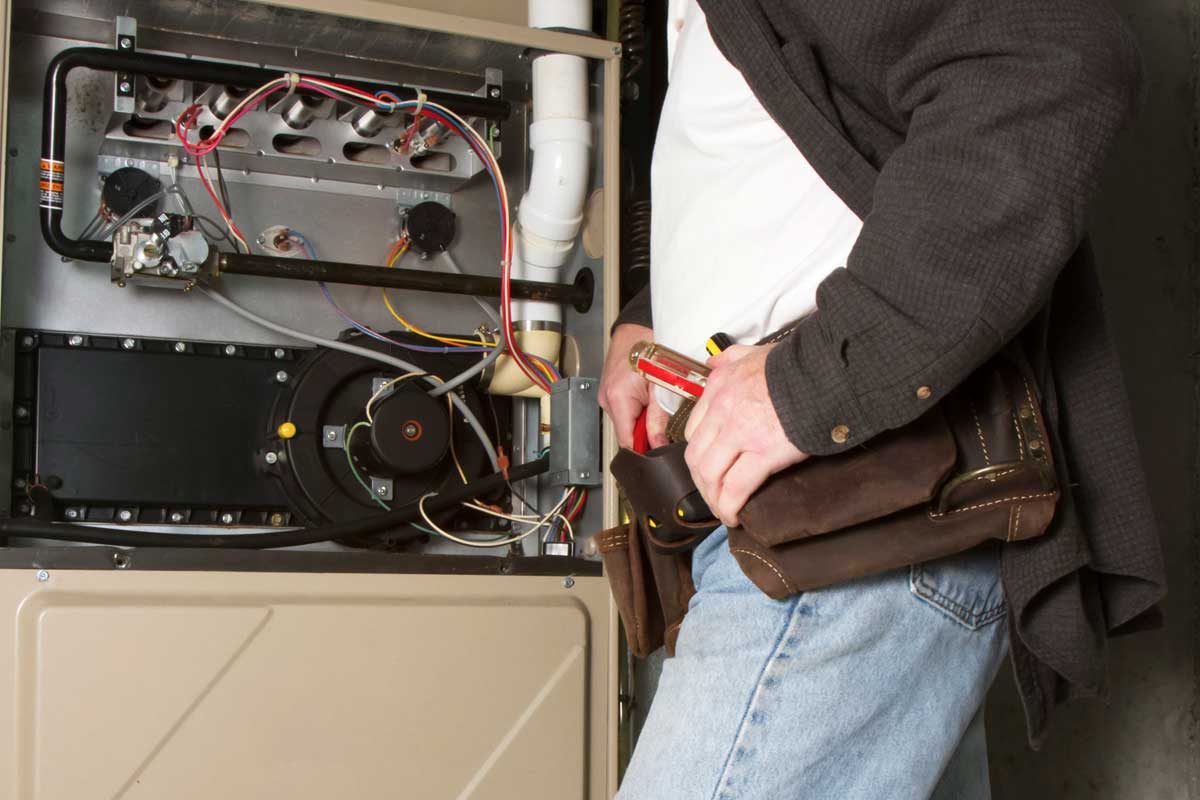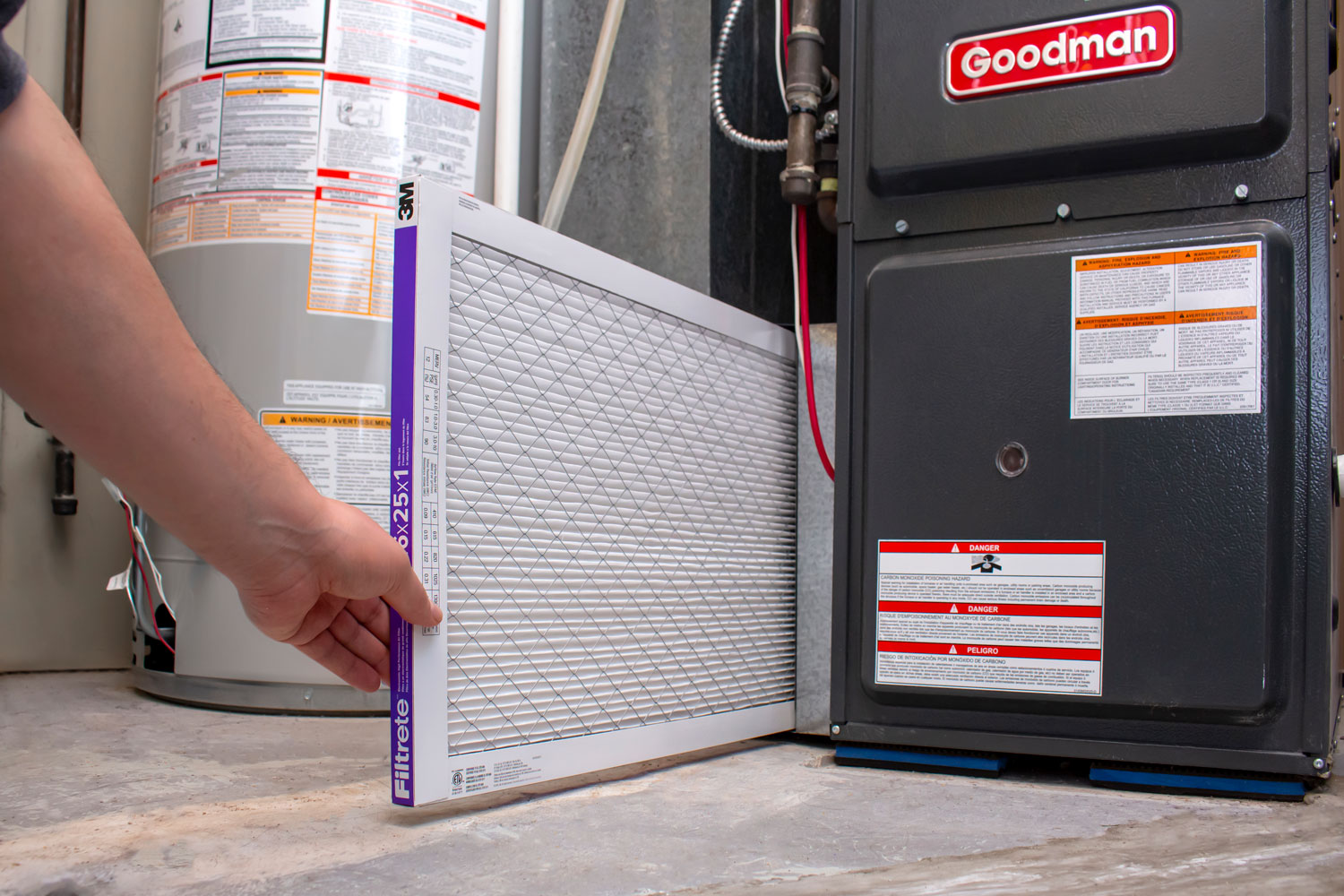A furnace that doesn't work correctly can be one of the most significant inconveniences in a homeowner's life. And it can be especially burdensome if the furnace is blowing out cold air in the middle of the winter. What causes this? In our efforts to cover the technical aspects of Goodman furnaces, we've researched what to do when a Goodman furnace begins blowing cold air. In this post, we'll talk about it.
Here are reasons why your Goodman furnace may be blowing cold air instead of hot air:
- Dirty air filter
- Incorrect thermostat setting
- Water gathering around the furnace
- Broken motor
- Pilot light issues
- Gas valve issues
- Control panel issues
- Leaky air vents
- Faulty flame sensor
- Faulty electronic ignition
More often than not, it's an older furnace that'll begin blowing cold air at some point, if at all. But in rare cases, you can also find these issues with new or recently installed furnaces. Sometimes you may be able to rectify the problem yourself. However, some cases may be more complex, requiring an appliance technician's technical knowledge and expertise. Continue reading about the different scenarios that may cause a Goodman furnace to blow cold air and how to troubleshoot them.

Contents
Reasons Why Goodman Furnace Is Blowing Cold Air
Dirty air filter
Most Goodman furnaces will require regular changing of the air filter. HVAC professionals recommend changing your air filters every two months, though some areas may require a more frequent change due to air quality.
A dirty air filter can compromise the airflow within your furnace, resulting in the blower motor overheating and eventually shutting down. This can also lead to hazardous conditions if it happens for an extended period.
Incorrect thermostat setting
It's always best to double-check the thermostat setting before heading to the furnace to troubleshoot it. Sometimes you may not think that the furnace is running correctly, when in fact, it's just that the setting is either in the "On" position or the "Auto" position with the temperature too low.
If the thermostat is in the "On" position continuously, it may continually cause the furnace to blow air. And if the furnace is old or has worn components, it may malfunction at some point.
If the setting is on "Auto," it could be that you need to raise the temperature a few degrees—sometimes, a room may feel warmer than it is.
Water gathering around the furnace
High-efficiency furnaces also come with their own set of issues. One being condensation developing around the drain line. If you have a Goodman furnace that is a high-efficiency model, this could cause the furnace to blow cold air at some point.
If the condensation line has a blockage, it will trigger the overkill switch, automatically shutting off the furnace to prevent a fire hazard. Here are the steps that you can take to clear the line:
- Turn off the furnace has power at the circuit breaker.
- Use a wet-dry vacuum to drain any water that has gathered in the drain pan.
- Detach the pan and clean it using warm water and dish soap. Rinse it, dry it, and attach it back to the furnace.
- Find the end of the condensate line to the outside of your home, and then use a wet-dry vacuum to remove any debris.
- After use to clean the line, restore the power to the furnace and test it.
Broken motor
The motor of the furnace is the largest and most important component when it comes to its operation. If the furnace is over 7 to 10 years old, the motor may go out at some point.
If it does go out, you may be able to get the motor repaired by an HVAC technician. However, in some cases, it may be too damaged and not worth the replacement. If the latter is the case, it may be best to replace the entire unit, as a new motor can run anywhere from $50 to over $400 to replace.
Pilot light issues
If the furnace is gas-operated, it'll typically have a pilot light that will need to be lit for the unit to operate. Sometimes the pilot light may go out on its own or due to drafts from the draft motor. And in some cases, it can be a result of an issue with your gas supply line. To troubleshoot this issue, check the instructions of your unit user's manual for how to ignite the pilot light.
If the flame continues to go out, note that it could also be a thermocouple-related issue. In this case, the part will need to be replaced or adjusted. You can replace the thermocouple yourself.
Gas valve issues
In some cases, the pilot light won't ignite due to a faulty gas valve. If the valve has not been cleaned in a while, it can become clogged with dirt and debris. This is typically something that only a technician may recognize. And if you've exhausted all other options during your troubleshooting, this may be something to consider.
Control panel issues

Some newer Goodman furnaces come with an electronic control panel, which can malfunction at some point—especially if the furnace is over seven years old. You may find that a simple reset can fix the issue, but in some cases, the control panel may be faulty and need replacing.
If the unit starts blowing cold air, it's best to first check the user's manual for the unit and then contact a professional if you cannot troubleshoot it on your own.
Leaky air vents
Sometimes older homes will have ductwork that has become worn or connectors that have become loose. When this happens, hot air can escape through the holes in your ductwork, causing the heat to dissipate to various areas of your home.
Turn on the furnace and place your hand on the vent directly above the floor to determine if this is the issue. If the blower is emitting hot air, but it arrives cold when it reaches the room vents, the chances are that you have a leak (or multiple leaks) somewhere.
Faulty flame sensor
A malfunctioning flame sensor can also be to blame if your Goodman furnace starts blowing cold air. The flame sensor detects ignition of the pilot light and initiates the activation of the blower motor, which in turn causes the furnace to run.
If the flame sensor is dirty, broken, or worn out, the motor may start, but the flame will keep running off, resulting in the emission of cold air to the vents. You can try to clean the flame sensor, in some cases, depending on the model. In other cases, it's best to consult an HVAC technician.
Faulty electronic ignition
Many modern furnaces have an electronic ignition component in a hot surface ignitor or an intermittent pilot. At some point, this component can fail, causing the unit to continue to run but blow out cool air instead of warm air. This will usually require the expertise of an HVAC technician to fix.
Is a furnace blowing cold air dangerous?
In some cases, a furnace blowing out cold air can be hazardous. This is the case if there is an air filter, clogged gas leak, or other issues that may be potential fire hazards. This is why it's best to address a faulty furnace as soon as possible, as it can prevent such problems.
How do you fix a furnace that blows cold air?

It depends on the reason why the furnace is blowing cold air. If there is an issue with the blower motor or other essential components, the part will need to be either. Or replace for the furnace to function correctly. However, if it's a simple fix, such as a clogged condensate line, air filter, or dirty flame sensor, the issue can be fixed within a matter of minutes.
Using your owner's manual for guidance is the best way to troubleshoot the issue. However, if you find yourself unable to remedy the furnace and it's still blowing cold air, chances are you will need a professional to take a look at it.
Does a furnace need to warm up?
Though it depends on the make and model of the furnace, most are furnaces will take anywhere from three to five minutes to warm up. If the furnace is older or connected to a propane tank, the process may take a bit longer. However, if you find that your furnace is taking over 10 minutes to warm up, the chances are that there may be an underlying issue causing the delay.
What to do if a furnace won't shut off?
If your furnace won't shut off, place the thermostat in the "Off" position. This should cause the blower motor to stop running. If it doesn't, reset the circuit breaker that controls your thermostat. Often when a furnace doesn't stop running, it's due to a faulty thermostat or dirty air filter. However, these are generally problems that are typically easy to fix.
Wrapping Things Up

As you can see, there are quite a few reasons why a Goodman furnace may start blowing cold air instead of warm air. Using your owner's manual to troubleshoot the issue is the best way to begin the process of fixing the problem. And, of course, if you run into trouble, it's always best to contact a qualified HVAC technician for guidance.
Before you go, be sure to check out some of our other posts:

My Goodman Heat pump is blowing hot air out the bedroom vent and cold air out the living room vent. Why is this happening.